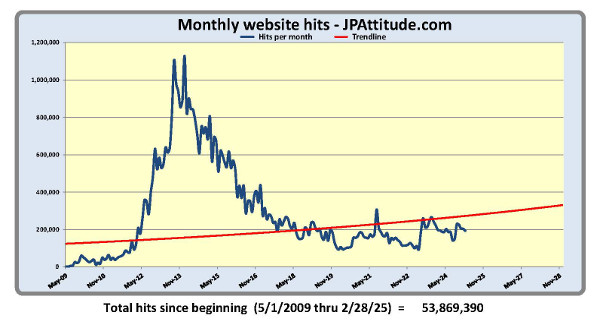Darwinism: the numbers don’t add up
June 4, 2009
In October of 2008 I wrote a column about liberals and numbers, explaining that the inability of liberals to comprehend numbers underlies most of their wrong-headedness. Nowhere is this more evident than in the rapidly disintegrating theory of Anthropogenic Global Warming, where objective scientists are stampeding to the side of skepticism because of the mathematical nonsense leftists have tried to peddle in support of the theory.
But how about that most sacred of leftist dogmas, Darwinian evolution? Let’s apply some common sense arithmetic and find out.
Before we can crunch the numbers for Darwinism, we need to answer two pieces of information:
1. We need a species count—we need to know how many species currently exist and how many have existed at various periods in the past.Both questions are inherently unanswerable which should, in and of itself, give us doubts about the accuracy of current evolutionary theory. After all, the main purpose of a scientific theory is to answer questions and form a basis for predictions about the subject under discussion, right?
2. We need to know how many transitional or intermediate species it generally takes to reach a given life form.
Anyway, never mind that. Let’s concentrate on the numbers.
The current number of animal species on Planet Earth is estimated to fall within the rather large range of 3–30 million. The vast majority of these are insects which all by themselves may total 30 million species according to some biologists.
So what do we do with those numbers? Beats me. I will manfully resist the temptation to take another dig at the uselessness of a theory that can’t provide decent numbers… oops.
Anyway, to make this exercise as fair as possible to the Darwinists, let’s be conservative and assume there are 20 million species on the planet. That’s ten million less than what many people claim for insects alone so that should be fair. (And notice that we haven’t even mentioned the plant kingdom.)
So what do we do about the number of species that existed at various times in the past? If we can’t even count the species that exist now, right here in front of our faces, clearly we can’t count the number of species that existed 500 million years ago with any degree of accuracy. Nevertheless, we do have one rock-solid way of guessing how many species existed at any point in time: we have the estimate of how many species exist now.
After all, it’s still the same planet. The planet is still the same size, still orbiting the same star, and still has the same amount of water. And we’re still talking about carbon-based life.
Why wouldn’t the number of species be approximately the same? It’s the best estimate we have so that’s what we’ll use: 20 million species.
Now we come to that second question. How many transitional or intermediate species does Darwinism require to get to each of these species?
Ha. Good luck answering that question. Nobody has even the vaguest clue. You’d think this would be the kind of question evolutionary theory, being the currently accepted paradigm, would answer for us, but… there I go again, complaining about the theory on philosophical grounds when I wanted to stick with the numbers.
We need some kind of estimate. How many speciations do we think lie between us and the monkey ancestor we share with chimpanzees? One, five, twenty, one hundred? Or look at the bugs: how many intermediate species lie between a wasp flying around in 2009 and its insect ancestor who survived the K-T Extinction Event 65.5 million years ago? One, five, twenty, one hundred, one thousand?
Beats the hell out of me. Beats the hell out of everybody, as a matter of fact.
We can say one thing with confidence. We can say that it took a lot of steps (or mutations) to go from the rodent-like mammals who survived the K-T Extinction Event to the point where Halle Berry walks out of the ocean wearing a swimsuit for James Bond. A lot of steps. Certainly thousands, possibly millions—but not all of those steps were unique to Halle Berry. Some of those steps branched off to make chimps and elephants and other irrelevant stuff.
You see how hard it is to pin this number down.
Let’s face it, the average number of speciations it takes to make any given species is utterly and completely unknown, and probably varies to such an extent as to be a meaningless concept.
But since we need a number to make our calculations, let’s err on the side of Darwinism and estimate conservatively. Let’s say that each species represents an average of ten speciations. That is a ridiculously low number—imagine trying to make Halle Berry out of a monkey with ten mutations—but we’ll use it to preempt any Darwinist protests.
So okay, what do we have now that we have our two numbers? Well, first, let’s establish a starting point.
540 million years ago, we entered the Cambrian Period, prior to which there were no higher life forms, and what life did exist was all in the oceans. We will use that as our starting point.
Now we can finally start calculating.
20 million species each needing 10 speciations equals 200 million speciations, to start us on our way. Then we have to factor in the extinctions.
Since the beginning of the Cambrian Period, there have been six major extinction events which killed off at least 20% of the life on Earth.
Even if we err on the Darwinist side of this calculation (again) and assume that only the extinct species had to be replaced before the next extinction event, and all other species remained the same (this is patently false, but I want to give the Darwinists no traction for complaints), then we are still left with the following numbers:
(Chart showing geologic time periods and mass extinctions can be seen here.)Cambrian-Ordovician extinction event: 20% die off = 4 million species = 40 million speciations to replace.
Ordovician-Silurian extinction events: 49% die off = 9.8 million species = 98 million speciations to replace.
Late Devonian extinction event: 50% die off = 10 million species = 100 million speciations to replace.
Permian-Triassic extinction event: 90% die off = 18 million species = 180 million speciations to replace.
Triassic-Jurassic extinction event: 50% die off = 10 million species = 100 million speciations to replace.
Cretaceous-Tertiary (K-T) extinction event: 30% die off = 4 million species = 40 million speciations to replace.
Altogether, that’s 758 million speciations required to create the higher life forms originally and then replace those that went extinct in the six named mass extinction events.
Minimum.
But we’re not done yet, not even close, because there is also something called the “background extinction rate” which basically means that even when nothing disastrous is happening a certain number of species will go extinct just from random chance, bad luck, or being in the wrong place at the wrong time.
That “background extinction rate” is estimated to be one extinction per million species years, which for the normal number of species we have estimated, 20 million, means that 20 species go extinct per year.
Every year. For the last half billion years.
That would add 10 billion more speciations to our calculations but to prevent the Darwinists from screaming bloody murder and beating their heads against a wall we’ll cut that way down. We’ll admit that the Darwinists who made that estimate of one extinction per million species years are full of baloney by a factor of two, and furthermore we’ll grant the common sense point that after a mass extinction event like those we’ve listed there wouldn’t be 20 million species left so the background rate would necessarily decrease, and therefore we’ll conservatively estimate 4 billion background rate extinctions since the beginning of the Cambrian Period instead of 10 billion.
That’s how fair we are.
So we add the 4 billion to the 758 million and that’s our lowball estimate of the number of speciations required over the last 540 million years.
4,758,000,000 speciations in 540,000,000 years means this seminal event of Darwinism—speciation—happens almost nine times each year.
Minimum.
Charles Darwin published his “On The Origin Of Species” in 1859, exactly 150 years ago. Since that publication, according to our conservatively calculated rate, over thirteen hundred new species should have popped into existence through the magical mechanism of random mutation & survival of the fittest.
We have not seen one such.
Even with the lure of a guaranteed Nobel Prize and undying fame for the lucky biologist who provides the evidence… not one.
Even trying to fix the game in laboratories where scientists try to make the great event happen… not one.
Okay, okay, maybe they are mostly happening out of our sight among the insects and sponges so we just didn’t notice… but even among vertebrates there should have been three or four new species. We don’t have the vertebrates catalogued and under observation enough to notice a brand new species suddenly popping up?
With all the Darwinists swarming all over the planet looking for some precious evidence, somebody should have seen a speciation by now.
The Darwinists will try to argue that most speciations happen in flurries as life rushes to adapt to new environmental stress but the same people making that argument insist that we currently live in such environmental stress: the Holocene Extinction Event (in which humans are supposedly causing the mass extinction of life).
So much for that argument.
I’m no biologist but neither am I writing to grind a religious axe. I have no religious reason for resisting the idea of evolution because I see no possible contradiction to my faith in God because of how life was created.
This is just me, a guy with a brain doing simple arithmetic, and the numbers do not add up for Darwinism.
From Reno, Nevada, USA













